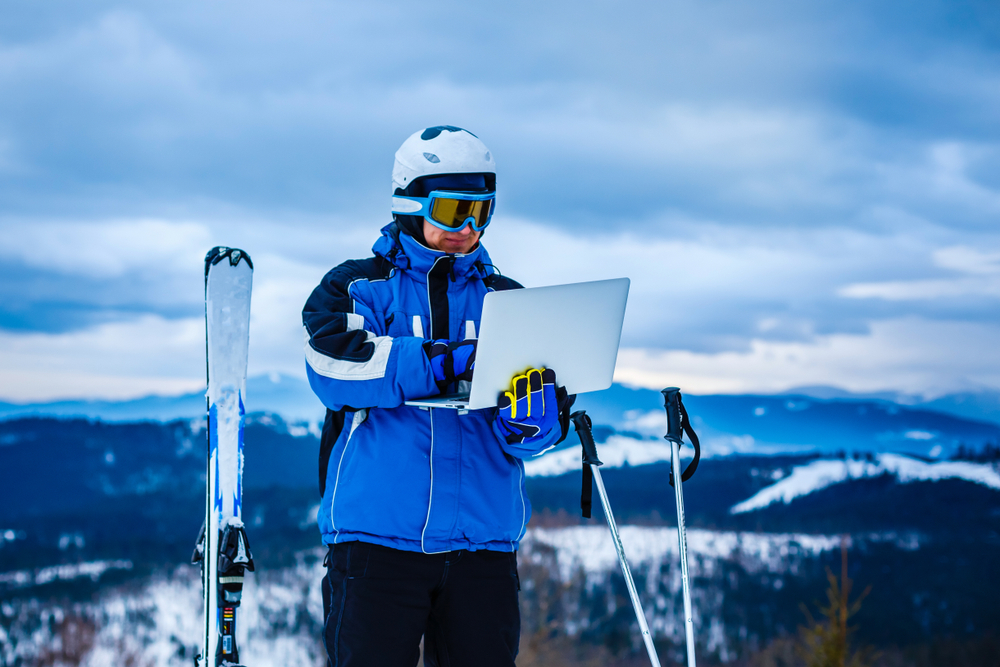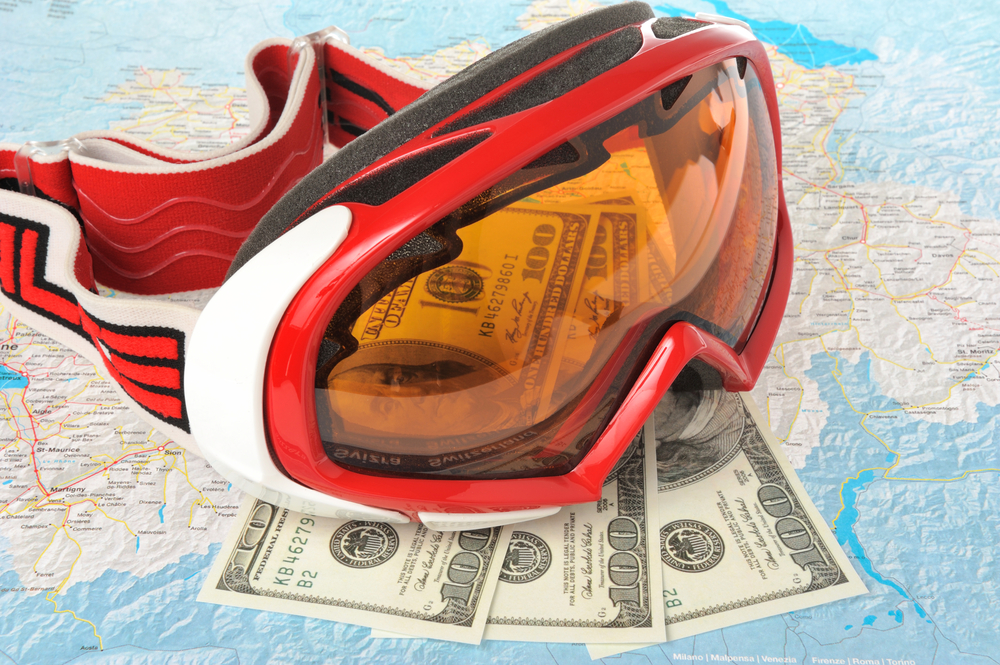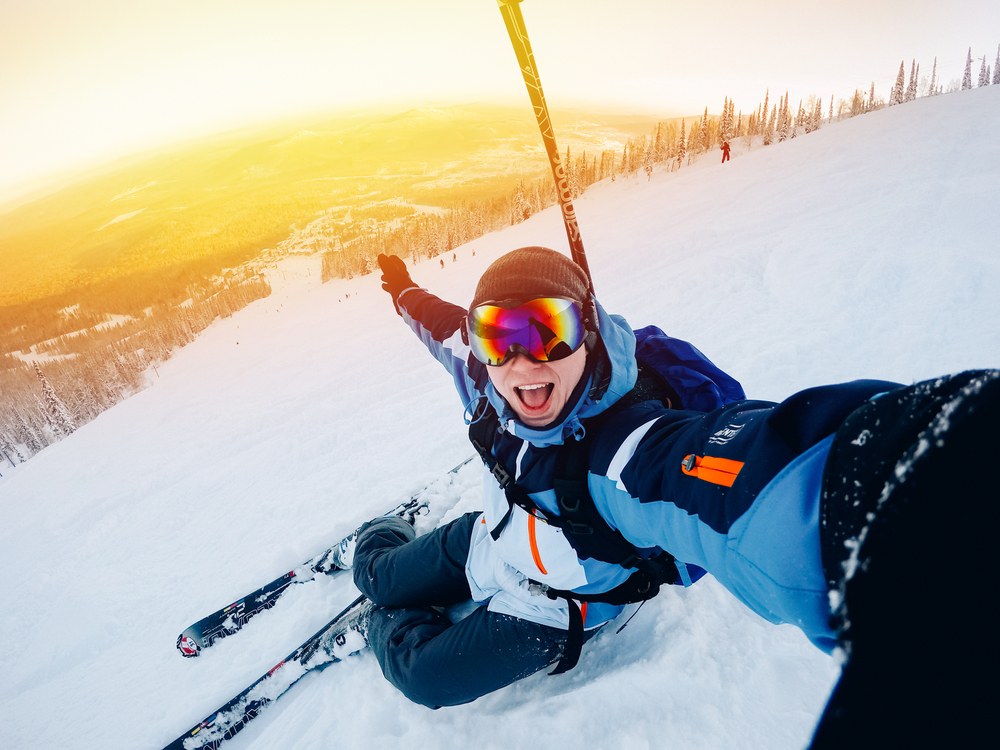You’ve fallen in love with powder, you think you can string a sentence together and know how to play on social media and now you want to make a living reporting on your passion.
If this sounds like you then we’ve put together some tips to help you break into the very niche world of snowsports reporting.
But first you must decide, is it journalism, blogging or influencing you are after because today’s reporting world comes in various forms and each requires different levels of skill, education and training.
Choose your poison
It is possible to make a living from a number of avenues but don’t give up your day job just yet. You’ll need to build your skill level and audience before you can start charging the big bucks. These are the main avenues you can choose, though if you want to lead the pack then you’ll need to work across multi channels so be prepared to work hard.
Influencers are those that traditionally use social media to document their niche passion (waterfalls of the world, island life, hotel carpets, photography) and to also portray messages for clients that pay to have their product on an influencer’s Instagram platform. It may require a lot of selfies depending on what kind of influencer you desire to be. Check out Lauren Bath, Australia’s ‘first professional’ Instagrammer with 460k followers, Daniel Kordan for landscapes and Andrew Muse who travels with his dog.

Vloggers are those that choose to mainly use video as their medium to report on their travels or lifestyle or advice and then post that video on a YouTube Channel, Facebook Watch, mini edits on Instagram and so on. They can make their money from advertising on video platforms and paid content.
Check out extreme adventure blogger Alex Hayes from Sydney who has a gazillion subscribers and Little Grey Box, husband and wife travel team from Australia who have 69k+ subscribers.
Bloggers use a website platform such as WordPress to create a blog site and then upload blog posts on the internet which are usually, but not always, in first person. Blogging revenue can come from advertisers, sponsored post partnerships, affiliate programs and branded content creation. One Mile at a Time is a blog about traveling using credit card and frequent flyer points and Hippie in Heels from a former nurse turned travel blogger in India.
Journalists traditionally report in third person for news sites and print publications and must adhere to traditional journalist codes of ethics including checked sources, fact checks and more. They are paid by the publishers of the publication. Most have journalism degrees or post graduate writing certifications or a ton of experience under their writing belt. Check out Escape.com.au for the travel section of the Sunday Telegraph paper and affiliates nationally in Australia, Traveller.com.au for the online portal of the printed travel pages from Fairfax nationally and The Telegraph in London’s dedicated ski travel pages.
Content production is when you work for a brand creating their content for their news channels and social media. This is a blend of PR and media creation and copy writing as the content you produce is not independent as it works to support the key messages of the brand. It may be blogging for a tourism board site or writing posts for a travel agency or wholesaler.
Snow your travel blog name (see what we did there)
Once you’ve chosen your online presence (your social media handles, website URL, blog name) and your niche (family ski travel, gap year snowboarders, over 50 skiers) then throw cash at it. Buy the .com, .com.au, .ca, .co.nz URLs for the domain names you are registering. If you set up a blog through WordPress you can buy through them otherwise GoDaddy, Crazy Domains and other sites can get the URLs you need without an exorbitant price tag.
Claim your names on social media, assuming you checked they were available before choosing your final brand name. You don’t have to set up your profiles straight away but make sure you have claimed them.
Then set up a blog site. Personally, I love WordPress, it’s easy, inexpensive and you can start basic and go big as you learn more. Research which will be better for you, wordpress.com or wordpress.org.
Skill up for travel blogging

Before you get started, make sure you have the skills required (including skiing and snowboarding) and if you don’t then go get training, education or learn on the job.
Write On
Your friends laugh at your Facebook status updates or tell you that you should be a writer. Now’s your time to hone that skill. Sign up for a writing course to learn the basics of structure, narrative arc and more.
The more you write the better it gets and to be honest, it’s all in the editing, less is more and while you may fall in love with your words they may come alive even more with a sharp edit. You can learn the secrets of editing at these styles of courses.
Try The Australian Writers Centre for blogging courses and freelance travel writing courses both onsite and online.
Snap snap
If you don’t know how to take a photo, whether on a phone, point and shoot or DSLR then pack up and go home, or start researching. The ‘Camera +’ app for smart phones and androids can do wonders for a lacklustre photo snapped on your phone.
If you are VBlogging or shooting interviews then the Panasonic GH5 is excellent. I used it for all my Olympic interviews on the ground in PyeongChang. Grab a Rode shotgun mic and you’ll be covered in most situations. If you are going down the action camera route then the latest GoPro HERO10 is a must for shooting stable smooth footage and follow cam.
You can win a GoPro HERO10 black here.
You could also check out the Action Videography course from Warren Miller Entertainment’s Adventure Film School. It’s an online course you can do at your own pace.
If you don’t have time or money to invest in any basic photography courses then get onto YouTube and look for tutorials for your camera of choice or follow photography bloggers including Trey Ratcliff. Trey specialises in HDR and holds live Facebook tutorials.
Ask questions
If you are interviewing people on camera for a video edit or off camera for a blog post (use your voice memo on your phone) or on a phone or Skype for an interview (‘tape a call’ is a good app for this) then take note. There is an art to interviewing and it’s not about you.
First, do your research, you wouldn’t interview an author without reading their book, would you? Google is your friend, use that search engine and create your questions based on what you find.
Yes, you can swap stories to create a relationship while chatting, but the interview is not about you. Your readers and viewing community want to see and hear the person’s story you are talking to. So, know when to shut up. If you don’t you’ll learn pretty quickly once you start editing footage, because if you don’t leave silent beats and edit points then you’re going to have a hard time chopping up that interview.
Speaking of which, there’s also a fine art to editing and it always comes back to a narrative arc. It doesn’t matter how beautifully shot your footage is if you don’t know how to create a story line then learn how to because you’ll get more people engaged in your video content.
Getting published as a snow travel blogger, writer or journalist

Ideas, ideas, ideas, these are what will get you published. Before pitching to any print editors, content publishers or websites make sure you know your stuff. Read their published content so you don’t pitch something that’s already been written. Read their Media Kit to understand their demographics. Pointless pitching family snow travel to a publication that targets 24 year old single men.
Listicles are good to pitch – top 10 intrepid ski resorts, 7 countries you didn’t know had skiing, 5 reasons to take a ski improvement course. You get the jist.
Simply pitching “I’m going to Niseko to snowboard and thought you might like me to write something” or “would you like a story on Queenstown” isn’t going to cut it.
“I’m heading to Niseko and have a few story angles listed below that you may be interested in” will work. Then list the angles:
- 6 hidden onsens in Niseko – the volcanic mineral waters of Japan offer serious respite and relaxation. This story will list where to find them in Niseko and what to do once you’re there including etiquette, what to bring and ‘how to onsen’
- The man who put Niseko on the map – an interview with the founder of Niseko’s most successful business.
- Why Niseko is coveted by powder skiers from around the world – x number of international skiers and boarders descend upon Japan each season and x percent of those head to Niseko. This is why. A story about the history of Niseko, the booming tourism and the high end hotel brands making their mark. Long feature.
But before you can get published you need to be published. This bit is tricky.
Having your own blog will give editors an idea of your writing and you can then send them links in your pitch.
Writing for known blogs that accept contributors means you might write for free but it also means you’ll be published and the more you’re published the more you can convince an editor to publish you and pay you.
Snow me the money

Once you’re up and running and you’ve grown your audience and readership via social media marketing then you can start charging for your own channels.
But how do you build your name? If you have a budget you can boost your Facebook posts that have links to your blog or vlogs. Target your boosted audience to the demographic you want (skiers and boarders in a particular country or state in a specific age range).
Invite guest bloggers on your site or offer to guest blog for free on more known bloggers sites with a similar demographic. This helps get your name out there and if they write on your site then chances are they will share your links on their channels.
Tag, a lot, on your Instagram. Tag people you admire if it’s relevant to the image you are posting and hashtag, hashtag, hashtag. Hashtags are the search engines of Instagram and can lead many people your way.
Once you have a niche name then you may want to employ an influencer agent to help you get brand sponsorships. Brands will pay you to promote their products in an innovative way on your social media.
You can also create a Media Kit. You’ll need to put your community numbers, including followers and what your engagement is and your reach. Then list the ways people can work with you from Sponsored blog posts to branded video content to straight up advertising and list your prices. Then send it far and wide to the brands that work for your personal brand. Choose those that align with your channel values.
Yes, yes but when do I get to go skiing for free?
Technically, you’ll never be skiing for free but you will be skiing. Even if a resort gives you a lift pass and hosts you with accommodation and adventures (this is called a ‘famil’) they will be doing so under either the understanding that you will produce editorial for your publications and have commissioned articles prior to arrival OR on an agreed paid brand arrangement.
But, again, once you have a core following of engaged readers and a community that is loyal then you can approach resorts and ask them for support with lift passes or accommodation. If you are writing for a publication then you can use their statistics, demographics and reach to present to the PR and communications teams in the hope of receiving support. But remember, they have a right to say no, especially if your story angle or outlet doesn’t fit with their strategy.
Relationships are key. If you do get hosted, don’t be a diva, you won’t be invited back. Remember no one owes you anything and we are all privileged to work in the ski industry. Build a good reputation for delivering engaging content and answering emails and you’ll go a long way.
The ideal, of course, would be to fund your own travel, always, and go with your friends, always, but this is not always within everyone’s reach.
Be transparent
Remember, internet users (despite the number of cat videos) are not stupid. So be transparent, if a post is sponsored put sponsored on there somewhere, if you have been hosted by a resort in order to write the editorial you are writing then say you were hosted in a disclaimer.
Phew, so there are just some of the gazillion tips and tricks and recommendations we would have for anyone starting out. If you have any questions feel free to put them in the comments and we’ll answer them for you. Promise.
Rachael Oakes-Ash is a journalist who influences, she’s a skier and the founder of PitchIt2Me PR training.






